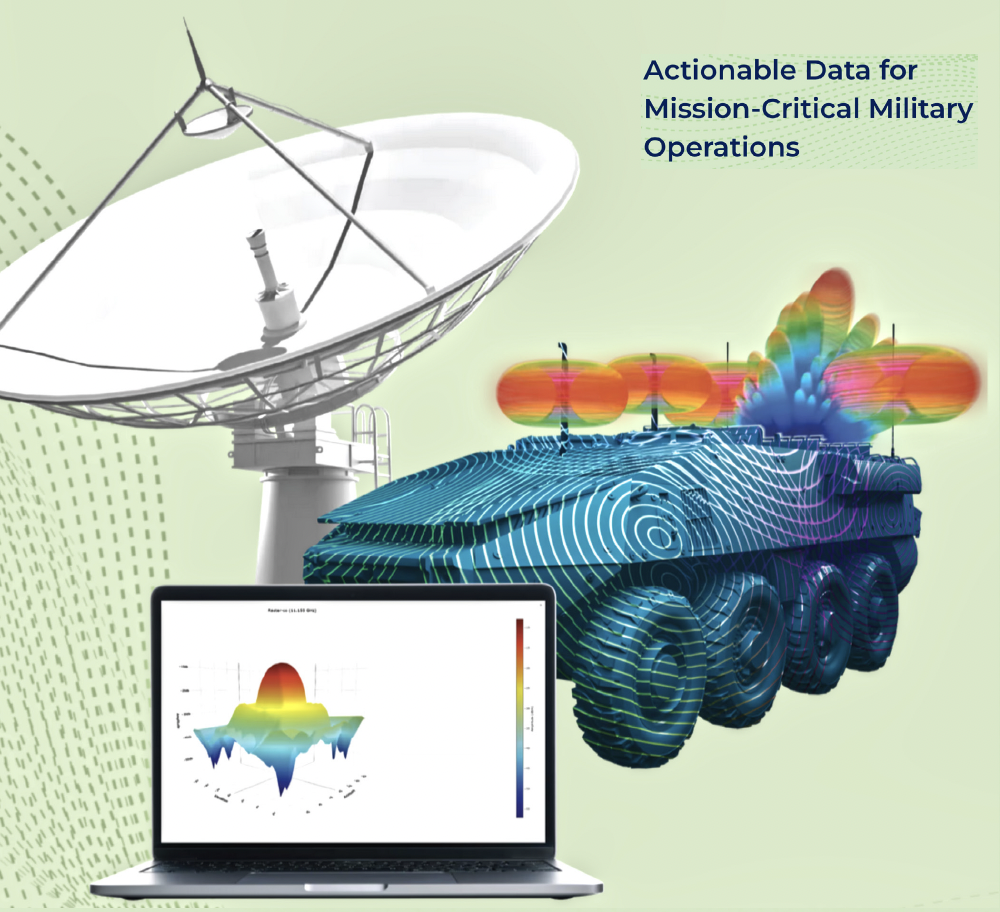Christian Rex-Nielsen, Head of Defense Programs, Quadsat
The modern battlefield today is quite different than the battlefield of a few years ago. Military forces are working to quickly adjust to the new environment as they catch-up with an evolving and highly crucial environment.
 We are witnessing a growing need for everyone to be able to talk to each other on the battlefield at the same time. However, while ensuring effective and seamless communications remains important, it is vital that troops remain undetectable.
We are witnessing a growing need for everyone to be able to talk to each other on the battlefield at the same time. However, while ensuring effective and seamless communications remains important, it is vital that troops remain undetectable.
How the military achieves that will likely change over the coming months. Simultaneously, we will see industry and innovation playing an increasing role in influencing and changing the way troops communicate as well as the actual course of warfare.
____________________________________________
Re-imagining Battlefield Communications
____________________________________________
We have learned from recent warfare situations that the planning of entire battlefield operations from a comfortable building before combat is initiated is no longer possible. Plans need to be made with urgency, in minimal timeframes and, more often than not, during the battle itself. This means that one of the most important factors for modern warfare is the ability to disseminate orders across the battlefield in realtime.
This is not an efficient use of resources, as these personnel could be better deployed elsewhere and the need for expensive equipment to be constantly be maintained. Over the coming months we will see an emphasis from military operations to re-imagining battlefield communications to make them more effective, while ensuring they remain undetectable
There are really only two possible options in the foreseeable future when it comes to new ways to approach this challenge, each of the options bringing upsides as well as downsides:
 Ensuring effective electronic defense means ensuring spectrum is hidden and protected, while enabling unrestricted access for troops on the ground and back at home. Current methods involve a highly-staffed group of communications vehicles to communicate and disseminate any communications from behind the lines to the troops.
Ensuring effective electronic defense means ensuring spectrum is hidden and protected, while enabling unrestricted access for troops on the ground and back at home. Current methods involve a highly-staffed group of communications vehicles to communicate and disseminate any communications from behind the lines to the troops.
1. Closed loop 5G networks
I could see a scenario where the military steps away from its reliance on SATCOM and instead relies on closed loop 5G networks. 5G enables highly secure communications, making it possible for troops to stay in touch without those discussions being intercepted. However,5G has some major disadvantages that might rule that technology out of the mix. One of the most significant warfare scenarios is that 5G is easily detectable with a spectrum analyzer. If all of the 5G connections are live at the same time, and given that battlefield formations follow specific patterns, it will be far too easy for an enemy to create a detailed map of exact locations of an entire troop using the 5G information. The other downside of a closed loop 5G network is that it doesn’t allow the communications to return to behind the lines, leaving troops operating blind or still needing another way to communicate to base.
2. Phased Array Antennas
Given the downsides of 5G and the ease of detection, I think it is highly likely that we will see phased array antennas being installed as an alternative literally on every military vehicle. It is becoming easier than ever to obtain cost-effective phased array antennas and connect to a Low Earth Orbit network. As the beam goes upward and the side lobes can, in theory, be hidden, they can then become undetectable with spectrum analyzers, making these antennas an interesting alternative, both for communication back to headquarters and between all of the troops on the ground. However, they are not without their own challenges and the technology needs a additional development to ensure they can operate error-free. For example, many have beam forming issues and they are generally difficult to operate on multiple frequencies. That said, there is a great deal of development and innovation occurring in this area that will likely help iron out some of those issues.
Industry: The 6th Domain of Warfare
The power of warfare is shifting. Previously, the power lay with the biggest and most powerful nation—now we are seeing billion and trillion dollar companies influencing the course of warfare. This has been recently apparent in the Ukraine where that nation embraced Starlink to stay connected.
Indeed, as we move toward either 5G or LEO satellite-based military communications, militaries no longer have control over their communications—they are now relying on industry in a way we have not seen before.
I believe as we continue to drive into 2025, we will see the role of industry grow further still, with companies holding many of the cards and having the power to change the outcome more so than even the nations themselves. This will alter the course of warfare options so greatly that we will begin to see this as the 6th domain of warfare, following air, land, sea, cyber, and space.
_____________________________________
The Increasing Value Of Innovation
_____________________________________
The role of industry will also encompass the extension of the technologies to ensure the military is operating with the latest and most effective innovations. Many military systems were procured several years ago and were based on an assumption that a military operator would dominate the spectrum, as was previously the case.
 Indeed, we have seen in the conflict in the Ukraine, significant innovation was achieved, geared toward being able to manage the electromagnetic spectrum.
Indeed, we have seen in the conflict in the Ukraine, significant innovation was achieved, geared toward being able to manage the electromagnetic spectrum.
As that is becoming impossible, those systems will need to be updated and renewed to ensure fewer potential points of failure. At the same time, western forces are experiencing new forms of attack, with other nations proficient at jamming communication lines, for example.
____________________
The Future Battlefield
____________________
In the future battlefield, military operators will need to learn how to be resilient and able to counter jamming, while ensuring a low probability of detection and engaging in effective, electronic defence, when necessary.

Christian
Rex-Nielsen
To accomplish that, operators will need to re-imagine battlefield communications while accepting and embracing the role of industry to enable innovation and help them to obtain advanced technologies. I believe we will see at least an initial shift in mindsets to this paradigm during early of 2025.
quadsat.com
Author Christian Rex-Nielsen is the Head of Defense Programs for Quadsat

